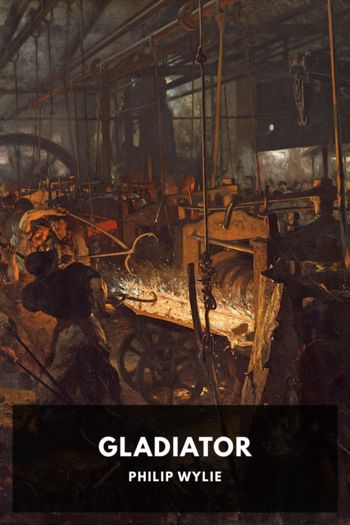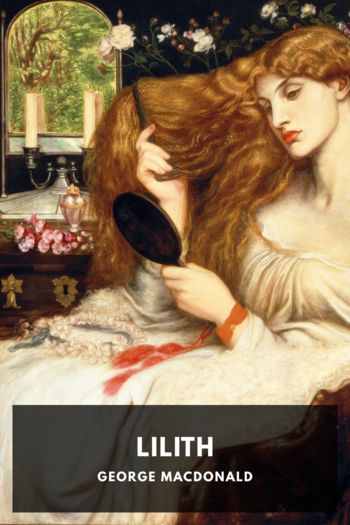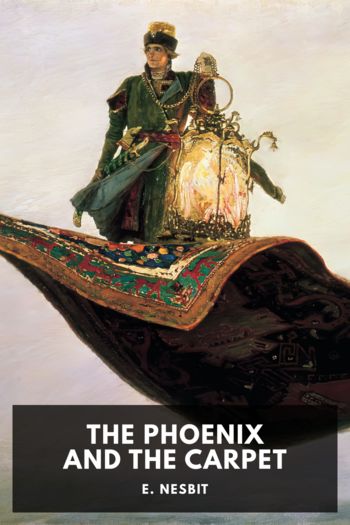Genre Other. Page - 283

Description
“Dictionary, n: A malevolent literary device for cramping the growth of a language and making it hard and inelastic. This dictionary, however, is a most useful work.”
Bierce’s groundbreaking Devil’s Dictionary had a complex publication history. Started in the mid-1800s as an irregular column in Californian newspapers under various titles, he gradually refined the new-at-the-time idea of an irreverent set of glossary-like definitions. The final name, as we see it titled in this work, did not appear until an 1881 column published in the periodical The San Francisco Illustrated Wasp.
There were no publications of the complete glossary in the 1800s. Not until 1906 did a portion of Bierce’s collection get published by Doubleday, under the name The Cynic’s Word Book—the publisher not wanting to use the word “Devil” in the title, to the great disappointment of the author. The 1906 word book only went from A to L, however, and the remainder was never released under the compromised title.
In 1911 the Devil’s Dictionary as we know it was published in complete form as part of Bierce’s collected works (volume 7 of 12), including the remainder of the definitions from M to Z. It has been republished a number of times, including more recent efforts where older definitions from his columns that never made it into the original book were included. Due to the complex nature of copyright, some of those found definitions have unclear public domain status and were not included. This edition of the book includes, however, a set of definitions attributed to his one-and-only “Demon’s Dictionary” column, including Bierce’s classic definition of A: “the first letter in every properly constructed alphabet.”
Bierce enjoyed “quoting” his pseudonyms in his work. Most of the poetry, dramatic scenes and stories in this book attributed to others were self-authored and do not exist outside of this work. This includes the prolific Father Gassalasca Jape, whom he thanks in the preface—“jape” of course having the definition: “a practical joke.”
This book is a product of its time and must be approached as such. Many of the definitions hold up well today, but some might be considered less palatable by modern readers. Regardless, the book’s humorous style is a valuable snapshot of American culture from past centuries.

Description
Gladiator, first published in 1930, tells the story of Hugo Danner, who is given superhuman speed, endurance, strength, and intelligence by his father as an experiment in creating a better human. We follow Hugo throughout his life viewed from his perspective, from childhood, when Hugo first discovers he’s different from others, to adulthood, as Hugo tries to find a positive outlet for his abilities around the time of the first World War.
Gladiator has been made into a 1938 comedy movie, and is thought to be the inspiration for the Superman comic books—though this has not been confirmed.

Description
In Hindu Tales from the Sanskrit S. M. Mitra has collected and transcribed in English various fables and short stories from across the Sanskrit tradition. The stories’ characters range from kings to mice and they find themselves in all manner of situations, from the mundane to the magical. Regardless of the setting, there is a common thread of moral choices, whether personal or for family and friends, that runs through the collection.
Siddha Mohana Mitra was an Indian author and political commentator, who was most famous at the time for his numerous books and articles for the British market on the colonial rule of India. This collection, edited by the author and translator Nancy Bell, was published in 1919, and was designed to be both appealing as a set of fairy tales and useful as a teaching tool for children’s moral perception of the world.

Description
In 1870s Norway, Nora Helmer struggles to be her own person within her marriage and a society that limits the opportunities of women. When decisions made to protect her husband come back to haunt her, Nora must fight for her family and for her own place in the world.
Since its first theatrical run, in which every performance was sold out, A Doll’s House has inspired admiration, controversy, and discussion. First published by Ibsen in 1879 in Danish, the official language of Danish-ruled Norway, A Doll’s House sold out its first two printings within months. It first premiered at the Royal Theatre in Copenhagen within a month of publication, and the play was performed in Germany in 1880 and London in 1884.
Initial translations changed the play, particularly the ending, to be more sympathetic and acceptable. Ibsen considered these changes to be a “barbaric outrage.” It wouldn’t be until 1889 that the play was performed as written in London and Broadway.
Ibsen’s work pioneered realistic depictions of middle class families and social themes. He claimed that he didn’t have feminist intentions in the writing of A Doll’s House, instead aiming for “the description of humanity,” but the play is widely considered an essential feminist work and has had a real lasting impact: as recently as 2006, it was the most performed play in the world.

Description
Lilith, first published in 1895, tells the story of Mr. Vane, the owner of a library that seems to be haunted by a raven—the ghost of the library’s former owner. Mr. Vane eventually follows this strange figure through a mirror and into another world, the “region of seven dimensions.” There Vane meets a number of characters, including Biblical characters like Adam and his first wife Lilith. Thus begins a battle of good versus evil that reverberates through dimensions. The narrative is heavy with Christian allegory, and MacDonald uses the world to expound on his Christian universalist philosophy while telling a story of life, death and ultimately salvation.
Critics consider Lilith to be one of MacDonald’s darker works, but opinion on it is divided. Despite this, some critics praise it for its rich imagery, with scholar Neil Barron claiming that the novel is the “obvious parent of David Lindsay’s A Voyage to Arcturus,” itself a highly influential work of fantasy.

Description
The Plastic Age can be read as an exposé on the moral failings of undergraduates in Jazz Age New England, as described through the four-year experience of a young man at the fictional Sanford College. Students enroll at Sanford to “acquire culture,” and do so at an age when they are “plastic” in the sense that they are changeable and meant to be transformed by the experience.
But, not all of the lessons of a college education are in the curriculum. To a student reader of the 1920s, Marks’ novel would have looked more like a moral tale, critique, and guide to navigating the challenges, pitfalls, and possibilities of higher education. Marks was an English instructor at Brown University at the time of publication but also had experience teaching at MIT and Dartmouth from which to draw his descriptions of campus life.
The book was popular, the second best selling novel of 1924. It inspired two motion pictures. But it was also controversial. The novel was banned in Boston and Marks was removed from his teaching position at Brown the next year. College administrators saw the novel’s setting as a thinly-veiled version of their own school and the novel’s portrayal of college life hit too close to home.
A Sanford English instructor seems to convey the author’s view when he says: “Some day, perhaps, our administrative officers will be true educators; … our faculties will be wise men really fitted to teach; … our students will be really students, eager to learn, honest searchers after beauty and truth.”
But what Marks sees instead are uninspired teaching and advising, superficial learning, pervasive smoking, prohibition-era drinking, vice, gambling, billiards, institutionalized hazing, excessive conformity, and a campus life that molds its students into less serious people. The author seeks elevation but sees regression.
Some of the norms and expectations of the 1920s may seem dated to the modern reader, but important themes endure. Marks went on to write 19 additional books and late in his career, returned to teaching literature at the University of Connecticut.

Description
Following the death of her father, Ann Whitefield becomes the ward of Jack Tanner and Roebuck Ramsden; Jack is a childhood friend, author of The Revolutionist’s Handbook, and descendant of Don Juan, while Roebuck Ramsden is a respectable friend of her father’s entirely opposed to Jack’s philosophy. Also in mourning are Octavius Robinson, who is openly in love with Ann, and his sister Violet, who is secretly pregnant. So begins a journey that will take them across London, Europe, and to Hell.
George Bernard Shaw wrote Man and Superman between 1901 and 1903. It was first performed in 1905 with the third act excised; a part of that third act, Don Juan in Hell, was performed in 1907. The full play was not performed in its entirety until 1915.
Shaw explains that he wrote Man and Superman after being challenged to write on the theme of Don Juan. Once described as Shaw’s most allusive play, Man and Superman refers to Nietzsche’s concept of the Übermensch. It combines Nietzsche’s argument that humanity is evolving towards a “superman” with the philosophy of Don Juan as a way to present his conception of society: namely, that it is women who are the driving force behind natural selection and the propagation of the species. To this end, Shaw includes as an appendix The Revolutionist’s Handbook and Pocket Companion as written by the character Jack Tanner.

Description
After learning of atomic physics, H. G. Wells began to think of its potential impact on human society. In The World Set Free, atomic energy causes massive unemployment, shaking the already fragile social order. The ambitious powers of the world decide to seize the opportunity to compete for dominance, and a world war breaks out, echoing the looming Great War about to ignite in 1914. Waking to the catastrophe, humanity begins the hard search for a way into a better future. The novel traces a soldier, an ex-king, a despot, and a sage through a profound transformation of human society, and we gain a window into Wells’ own thoughts and hopes along the way.
With one prophetic stroke, Wells gives the first detailed depiction of atomic energy and its potential destructive power, and predicts the use of the air power in modern warfare. He may have even directly influenced the development of nuclear weapons, as the physicist Leó Szilárd, shortly after reading the novel in 1932, then conceived of harnessing the neutron chain reaction critical to the development of the atom bomb.

Description
A Portrait of the Artist as a Young Man is Joyce’s first novel, published after the previous success of his short story collection Dubliners. The novel is written in a modernist style, with dialog and narration blending together in a kind of stream-of-consciousness meant to invoke the blurriness of memory.
Joyce originally planned writing a realist autobiographical novel of 63 chapters titled Stephen Hero. He abandoned the attempt halfway through, and refocused his efforts on Portrait, a shorter, sharper work in the modernist style. His alter-ego remained Stephen Dedalus, named after Daedalus, the mythological Greek craftsman and father of Icarus. Portrait was written while he was waiting for Dubliners to be published, a process that took eight years and so frustrated Joyce that he once threw the manuscript of Portrait into a fire, causing his family to run to save it.
The novel closely traces Joyce’s early years. Like his alter-ego Stephen, Joyce was born into a middle-class family and lived in Dublin as they descended into poverty; he rebelled against his Irish Catholic upbringing to become a star student at Dublin University, and put aside thoughts of priesthood or medicine, the other careers offered him, to become a writer. Joyce doesn’t shy away from sensitive topics, presenting the discoveries of youth in all of their physical detail, including Stephen’s teenage visits to prostitutes (which also mirror Joyce’s youth, and were how he probably contracted the suspected syphilis that plagued his vision and tortured his health for the rest of his life), and the homosexual explorations of children at a Jesuit school.
The writing is in the free indirect style, allowing the narrator to both focus on Stephen and present characters and events through his eyes, until the last chapter, where Stephen’s first-person diary entries suggest he’s finally found his voice. As the novel progresses, the syntax and vocabulary also grow in complexity, reflecting Stephen’s own development.
Of Joyce’s three novels, Portrait is the most straightforward and accessible. But it remains just as rich and complex as any masterpiece, with critics across generations hailing it as work of unique beauty and perception.

Description
Like other E. Nesbit stories, The Phoenix and the Carpet was initially published in The Strand Magazine. While The Railway Children or Five Children and It proved more popular, Phoenix has still been adapted into three BBC TV series and a film.
The story picks up some time after the events of Five Children and It. The children are back in London and encounter another ancient, magical creature: this time a noble, beautiful, arrogant, and vain Phoenix. He comes with a magic carpet which the gang uses to go on adventures around the world. Some things don’t go as planned, but there are still opportunities to make others happy.
As a female British author of children stories, E. Nesbit was not a typical early 20th century woman. Described as tomboy during her childhood, she grew up a staunch supporter of democratic socialism in a time when many were crushed under poverty. She was a founding member of the Fabian Society, and dedicated herself to charity work, so much so that she almost ended up in poverty.
Nesbit’s stories continue to fascinate readers. Her dry wit and respect with which she engages children ensures that adults can also enjoy her tales. Her depiction of magic—how it follows rules which must be taught or learned, and the painful consequences when they are forgotten—has influenced the works of other writers such as P. L. Travers, C. S. Lewis, and J. K. Rowling.